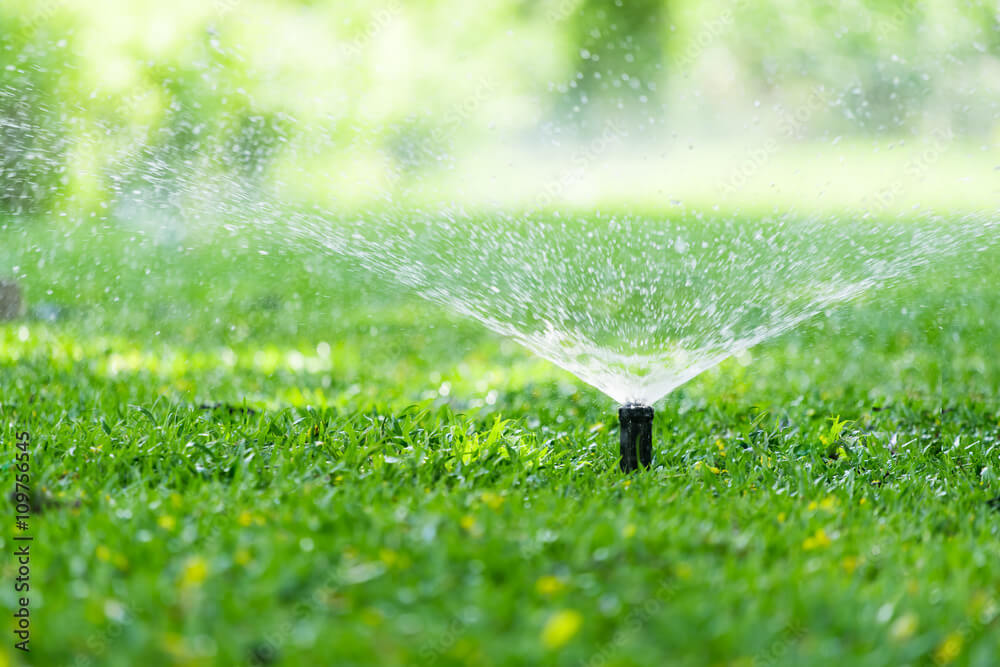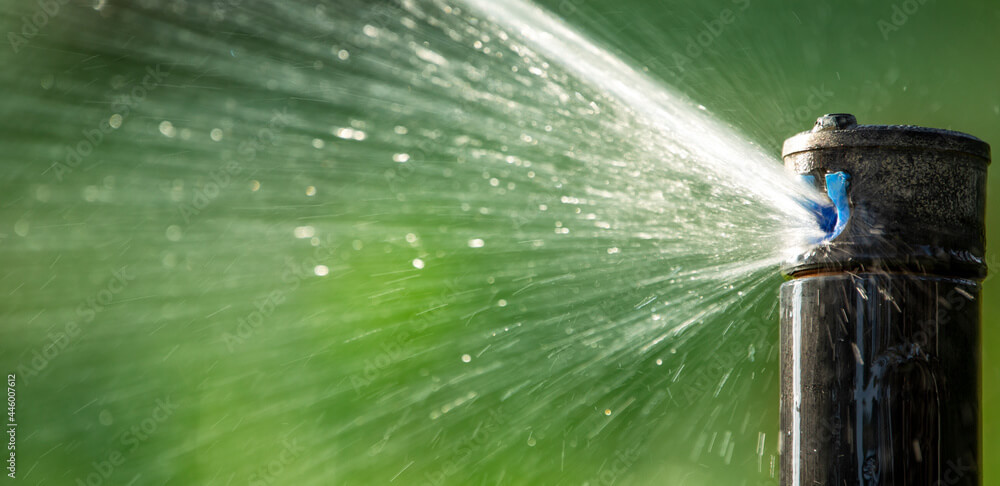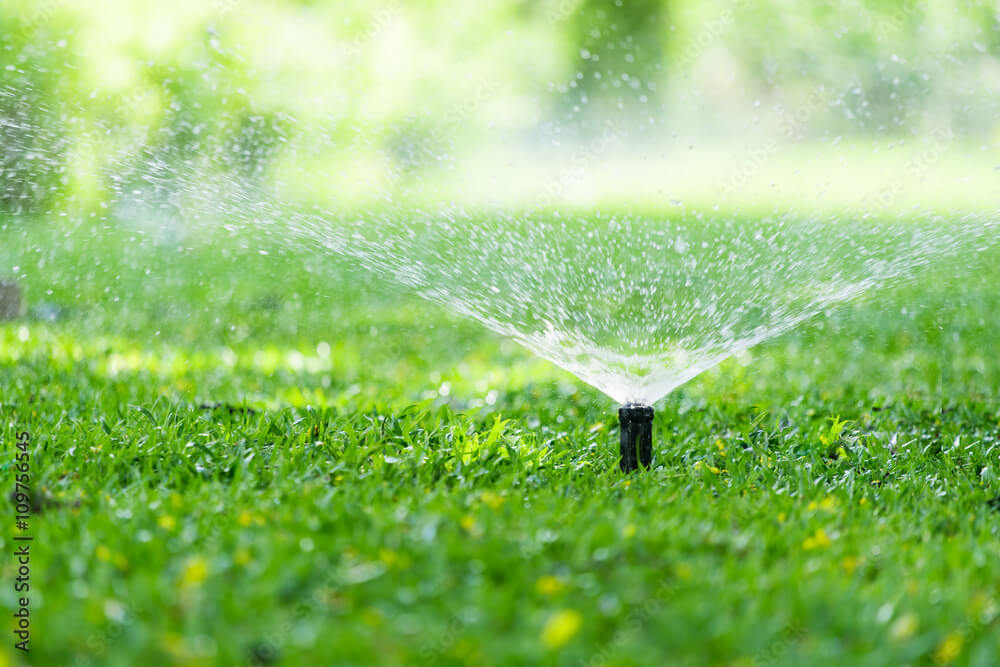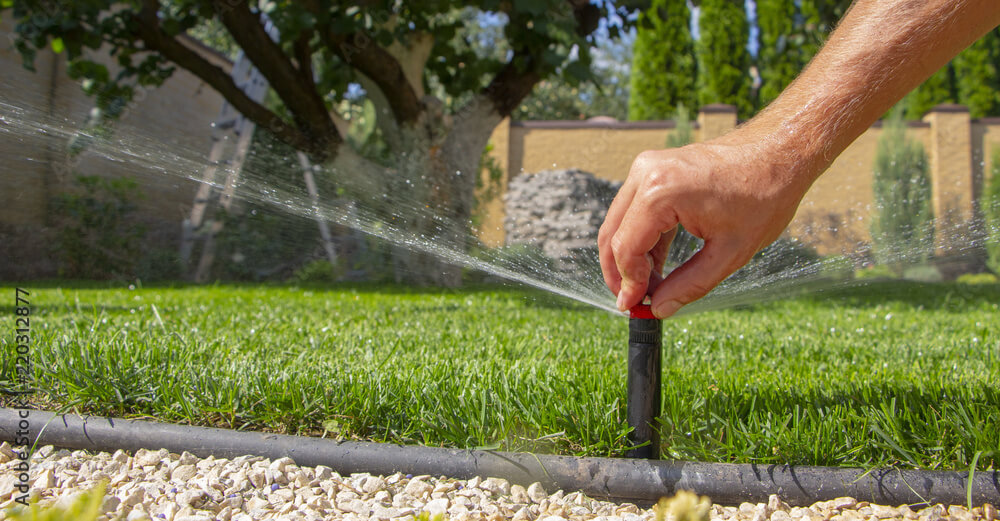Types of the Main Sprinklers Heads
Rotary and spray sprinkler heads are two of the most common types of sprinkler heads used in irrigation systems. Understanding the differences between the two can help you choose the right type of sprinkler head for your specific needs.
Rotary sprinkler heads have a rotating nozzle that sprays water in a circular pattern. They are typically used for large areas of lawn or landscaping and can provide coverage for areas up to 50 feet in diameter. Rotary sprinkler heads are known for their even coverage and are often used to water lawns and other grassy areas. This type of sprinkler head uses a motor to rotate the nozzle, which allows it to cover a large area with a single sprinkler head. This can help to reduce the number of sprinkler heads required to water a large area, which can in turn reduce the amount of time and effort required to maintain the irrigation system.
Spray sprinkler heads, on the other hand, have a fixed nozzle that sprays water in a fixed pattern, such as a fan or a cone shape. These sprinkler heads are often used for smaller areas and can provide coverage for areas up to 30 feet in diameter. Spray sprinkler heads are particularly useful for watering flowerbeds and gardens, as they can provide targeted coverage for specific plants. This type of sprinkler head uses a simple pressure-based system to spray water, which makes it a cost-effective option for smaller irrigation systems.
One of the key advantages of rotary sprinkler heads is their ability to provide even coverage over large areas. This is important for lawns and other grassy areas, as an even distribution of water can help to promote healthy growth and prevent the development of bare or patchy areas. Rotary sprinkler heads also can adjust the arc or radius of the water spray, which allows you to tailor the coverage to the specific needs of your lawn or landscaping.
Spray sprinkler heads, on the other hand, offer greater flexibility in terms of water distribution. The fixed nozzle allows you to adjust the direction and intensity of the water spray, which can be useful for watering flowerbeds and gardens. This type of sprinkler head is also easier to install and maintain than rotary sprinkler heads, as it does not require a motor to rotate the nozzle. This makes it a good choice for smaller irrigation systems.
Another factor to consider when choosing between rotary and spray sprinkler heads is the type of soil in your area. Rotary sprinkler heads are better suited to areas with sandy or well-drained soils, as they can provide even coverage without causing water runoff or erosion. Spray sprinkler heads are better suited to areas with heavy or clay soils, as they allow for more targeted watering that can help to reduce the risk of water runoff or erosion.
It’s also important to consider the size and shape of the area being watered when choosing between rotary and spray sprinkler heads. Rotary sprinkler heads are ideal for large, open areas, such as lawns and sports fields, while spray sprinkler heads are best for smaller, targeted areas, such as flowerbeds and gardens. In general, rotary sprinkler heads are more expensive than spray sprinkler heads, so it’s important to choose the right type of sprinkler head for your specific needs to ensure that you get the best value for your money.
Finally, it’s worth noting that both rotary and spray sprinkler heads can be connected to a timer and automated system, which allows you to set the watering schedule based on the specific needs of your plants. This can help to conserve water and reduce the amount of time and effort required to maintain your irrigation system.
If you’re in the Connecticut area, don’t hesitate to contact Dobson to find a solution that works for you. We are here to serve them with the best and most qualified team. If you find yourself out of our service area, contact your local reputable irrigation provider.
rotary heads


Spray heads



